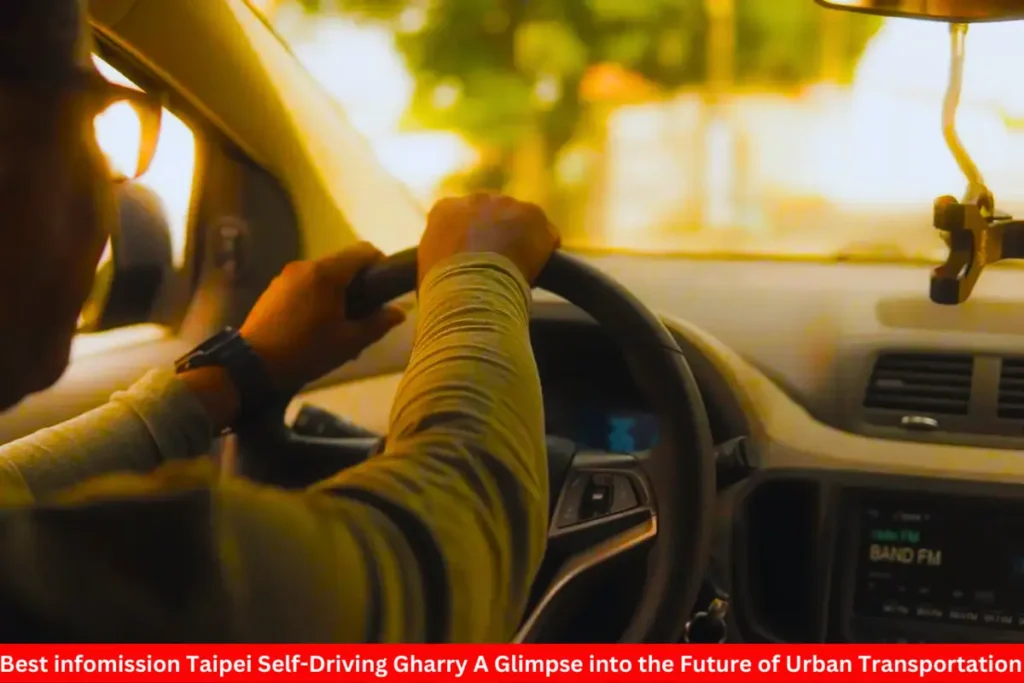As cities worldwide grapple with growing populations and increasing traffic congestion, innovative solutions like the Taipei Self-Driving Gharry in Taipei pave the way for a smarter, more sustainable urban future. Taipei, a bustling metropolis known for its vibrant culture and technological prowess, is now at the forefront of adopting autonomous vehicle technology to transform its transportation landscape. This article explores Taipei Self-Driving Gharry system’s development, benefits, and future potential.
The Rise of Autonomous Transportation in Taipei
Taipei has consistently been a hub for technological innovation and smart city initiatives. Introducing Taipei Self-Driving Gharry—locally known as autonomous carriages—marks a significant step in the city’s commitment to reducing traffic congestion and enhancing commuter convenience. These autonomous vehicles blend cutting-edge technology with traditional forms of transport, making them a unique addition to Taipei’s urban mobility options.
How Taipei Self-Driving Gharry Work
Self-driving gharries operate using a combination of advanced sensors, cameras, and artificial intelligence (AI) to navigate the busy streets of Taipei without human intervention. These vehicles are equipped with LiDAR (Light Detection and Ranging) technology, which helps create precise, real-time maps of their surroundings. AI algorithms process this data to make instantaneous decisions about speed, direction, and obstacle avoidance, ensuring a safe and smooth ride for passengers.
Benefits of Self-Driving Gharries
Enhanced Safety: By eliminating human error, the leading cause of most traffic accidents, self-driving gharries offer a safer transportation alternative. The AI-driven system is designed to adhere strictly to traffic rules and react quickly to unexpected situations.
Traffic Congestion Reduction: Autonomous gharries can communicate with each other and with traffic management systems to optimize routes and reduce bottlenecks. This networked communication helps evenly distribute traffic flow and significantly lowers the chances of traffic jams.
Environmental Impact: Electric-powered self-driving gharries contribute to a reduction in urban air pollution. By transitioning to electric vehicles (EVs), Taipei is minimizing its carbon footprint, aligning with global efforts to combat climate change.
Accessibility: These autonomous vehicles provide increased mobility for the elderly, disabled, and other populations who cannot drive themselves. This inclusivity fosters a more connected and supportive urban environment.
Challenges and Considerations
Despite the numerous benefits, the integration of Taipei Self-Driving Gharry into Taipei’s transportation network also presents several challenges:
Technological Reliability: Ensuring the reliability of AI systems in diverse and unpredictable urban settings remains a primary concern.
Regulatory Frameworks: Establishing comprehensive legal and regulatory frameworks for autonomous vehicles is crucial to address safety, privacy, and liability issues.
Public Acceptance: Gaining public trust and acceptance of autonomous vehicles involves extensive community engagement and education about Taipei Self-Driving Gharry technology’s benefits and safety features.
Future Prospects
The future of Taipei Self-Driving Gharry system looks promising. The city plans to expand its fleet of autonomous gharries, integrate them with existing public transport systems, and explore more advanced AI capabilities to enhance operational efficiency. Additionally, Taipei focuses on developing smart infrastructure that can communicate with autonomous vehicles to streamline traffic management further and support a seamless transport experience.
Conclusion
Taipei Self-Driving Gharry initiative is more than just an experiment in urban transportation—it’s part of a broader movement towards creating smarter, more sustainable cities. As this technology evolves, it has the potential to significantly alter how residents and visitors experience urban mobility, making it safer, more efficient, and more accessible. With continued innovation and public engagement, Taipei is set to lead by example in the global shift towards autonomous urban transportation.






